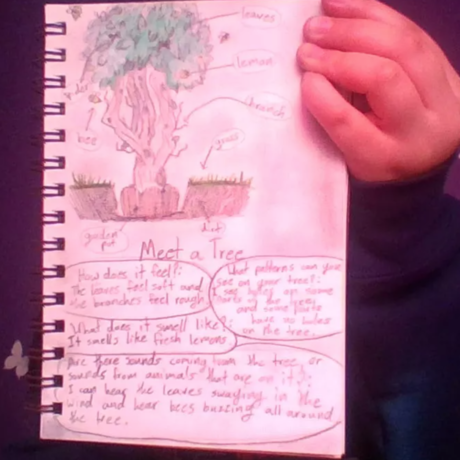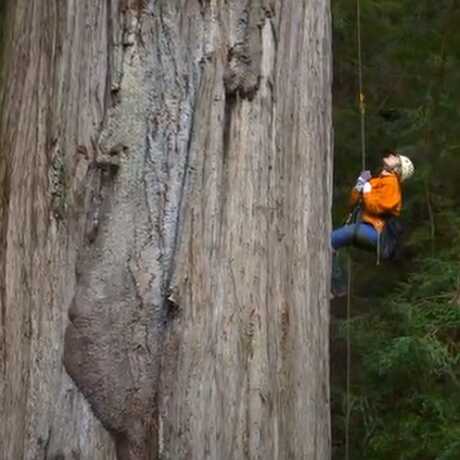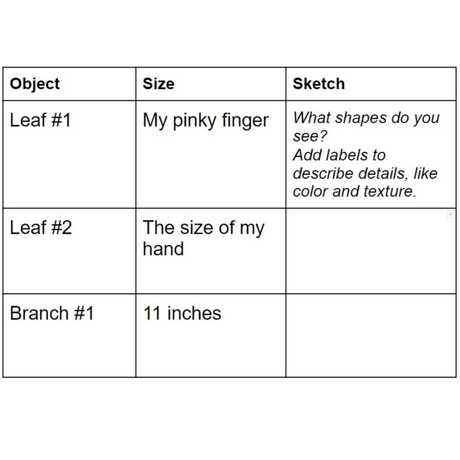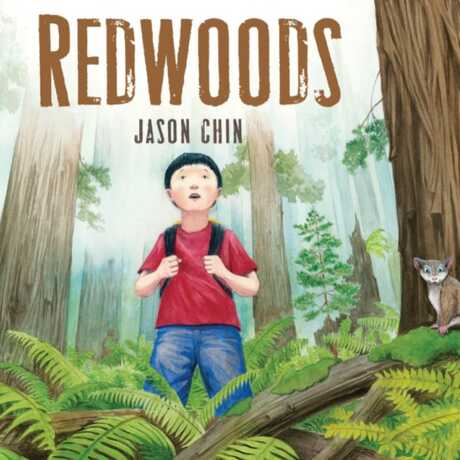Join us as we get up close to trees in our neighborhoods and climb a redwood giant with tree scientists! Grab a pencil and a blank piece of paper, or your science notebook. You may want to jot down your observations, make sketches, or write down any questions you have as we explore.
- pencil
- paper or science notebook
- ruler (optional)
- camera (optional)

1. Stop and Think!
- What makes a tree healthy?
- For example, when you look at a tree, how do you know it’s healthy? What do you look for?
2. Stop and Jot!
- Write down your ideas onto your piece of paper or into your science notebook.
3. Explore!
- Visit a tree. You can look out the window or take an adult with you to a tree in your neighborhood.
- If you aren't able to find a tree, check out Pictures A and B, and observe trees found near an Academy educator's home.
4. Observe!
- Does the tree look healthy?
- What do you notice that makes the tree look healthy?
- If it isn't healthy, why do you think that?
- Look for clues.
5. Sketch!
- Sketch the tree you've been observing.
- You might sketch the trunk, leaves, branches, or anything else that stands out to you.
6. Add labels!
- Next to your sketch, describe if your tree look healthy or not.
- Point to areas that make it look healthy or not healthy by drawing arrows.
- If your tree does not look healthy, what do you think is happening to your tree? Or what do you think already happened to it?

Let's visit a coastal redwood forest!
1. Imagine yourself in a forest. As we walk through this forest, pay close attention to patterns and details.
- What does it feel like?
- Is there anything surprising?
- What do you notice?
- What do you wonder?
2. There are 4 videos. Play each video in this order by using the buttons below. The videos have some pauses built in for you to make observations. Simply hit continue when you are ready to move on in the video.
3. While you observe closely, feel free to take notes and sketch. Scientists like to take notes and make sketches to better understand what they observe.
4. Have fun visiting the virtual coastal redwood forest!

1. Find a nearby park, if it is safe to do so. Be sure to take an adult with you! You can also go outside to the front of your home on your sidewalk, or in your backyard.
2. Look for the following objects. Find as many as you can of that type of object. For example, try to find more than one leaf. It's okay if you don't find all objects from the list below.
- leaf
- seed
- flower
- root
- tree
- branch
3. Begin to draw and measure the things you found. Write the sizes down for each item. It may be helpful to use a chart like the one shown to the left. Tip: If you don't have a ruler, don't worry! You can use your fingers or hands as a measuring tool! For example, "Leaf 1 is the length of my pinky finger."

Join Save the Redwoods League for a story about a boy who discovers a book about redwoods and finds himself in their midst as he turns the pages.


